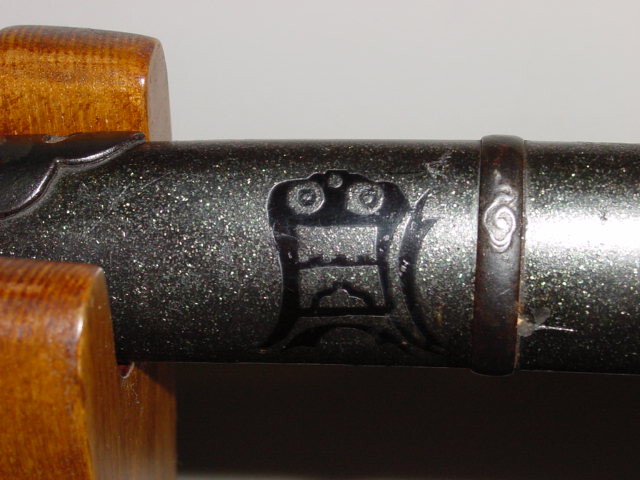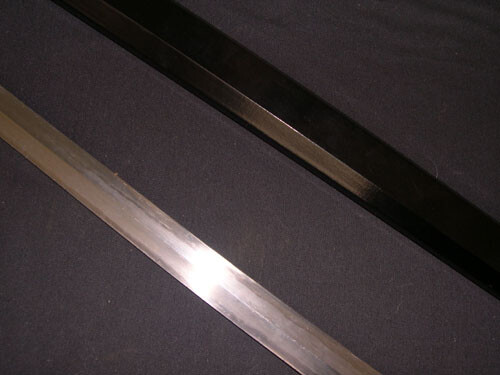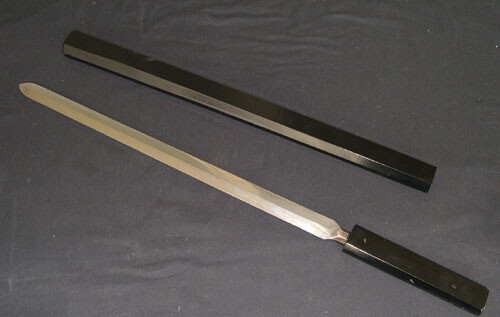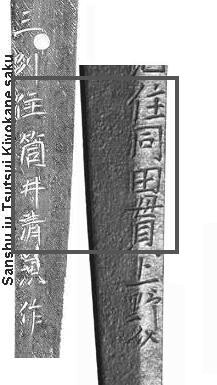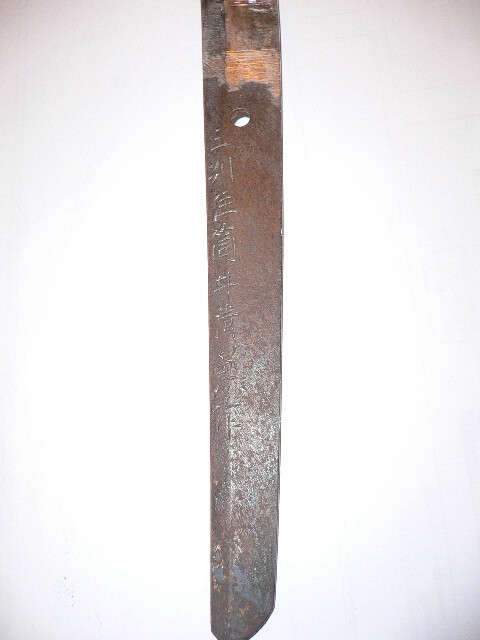-
Posts
264 -
Joined
-
Last visited
Everything posted by James
-
Seems to be inletted into the surface lacquer so perhaps Remzy is correct. It still doesn't explain what they are exactly though. They almost look like little monsters don't they?
-
Recently, I purchased a wakizashi in toppei koshirae and there are some strange markings on the saya. I have no clue as to what they may be. Any ideas?
-

Question regarding NBTHK / NTHK Shinsa
James replied to James's topic in Auctions and Online Sales or Sellers
From what you've said, it sounds like they don't rigidly adhere to a rule that 'no sword that has a fatal flaw will pass shinsa' but rather assess each sword individually and then determine the outcome on a case-by-case basis. -
Hello all I have a question about the NBTHK / NTHK and their Shinsa. If a sword that has been submitted for Shinsa is found to have a fatal flaw, is it immediately disregarded as a candidate for a certificate e.g. Hozon? I would think that this would be right but what if, for example, a sword by a famous smith is submitted for papers and is found to be sho-shin but it has a hagire? Would it then fail Shinsa?
-
If it's a genuine Bishu Osafune Munemitsu, then you have yourself a sword by a very good smith.
-
Nanshoku-Samurai, Any further photos / info on this ?
-
X X X Masa Hide
-
How does one sheathe/unsheathe a ken or a ken-like yari? It wouldn't be good to slide it out on its edge, but it also wouldn't be good to slide it on the ji. Thoughts?
-
This yari is unusual not just in it's length but also in the fact the both the ura and omote are the same i.e. not flat surface on one side. Could this be a ken? The hamon isn't all that clear but here's a photo of it anyway:
-
Hi I just bought a large yari that seems to have just one kanji for the mei. As you will see, it the first kanji in the name 'Fujiwara'. Does that mean this mei just reads 'Fuji'? or perhaps there is a different translation when the kanji is alone? Here are the photos:
-
Please bare with me here, but if you could take a look at the following diagram and tell me if I've got it right.
-
Thanks for your reply Darcy but I'm a bit confused - you said "...the diamond-like shape on the left is associated with the Yamato den." Did you mean to say the diamond-like shape on the right? And you say that it's associated with the Yamato-den, so is that diamond shape construction exclusive to the Yamato-den? I honestly was under the impression that most Nihonto were tapered from the shinogi to the mune. Can anyone shed some light on this? It seems to me that it would be really quite a big deal in terms of cutting properties whether a sword had this tapering or not since there is a significant amount of steel difference in the back portion of the blade.
-
These are probably elementary level questions, but I feel the need to ask them. 1) What is the terminology / properties / traditions / etc. of the different way the shinogiji is made as seen in the following diagram. I would like to know as much about that as possible since it's been on my mind for some time. 2) Is a high or low shinogi determined by the distance between the shinogi on the ura and shinogi on the omote, or the distance between the shinogi and the mune? Thank you
-
I thought I'd give this a go: Eisho (1504), Ju-ichi Nen (11th year), Hachi Gatsu (8th month), Yoshi Hi (Lucky day) = A lucky day in August, the year 1514. Is that correct?
-
There's no connection to Dotanuki; I suppose I just got confused with the similar look of the kanji.
-
I didn't think Dotanuki signed tachi-mei. Thanks for your help
-
Hello There is a katana I'm considering purchasing (not eBay); please help me with the translation. I think it may be Dotanuki but I'm not sure. Also, if someone could be so kind as to let me know if it is genuine or not, I'd be very thankful. Here are the photos (these are the best the seller could take with his camera).
-
Thanks for the info Brian. I've found a great article on this matter and I recommend that anyone interested in this topic should read it: http://www.laighleas.com/shostamp.htm
-
Hello Could someone please help me determine whether this is a genuine mei of the Shin-Shinto smith Korekazu? Many thanks. Here are the two photos:
-
Forgive my ignorance but if a blade has a Showa stamp, does that automatically classify it as a low quality, oil quenched piece?
-
On the nakago there is a Showa stamp, then the smith's mei, and finally the hot stamp. I can't see any other markings.
-
Yes, that's it! "Believed to read: "Registration of practical design #211689. Wrapped steel forging blade"" Would this mean the blade is good quality?
-
Hi Guys Can someone identify this hot stamp for me please and let me know what it means. It is found on a the nakago of the seki smith 'Kaneshige', does anyone have some information on this smith? Thanks in advance.





